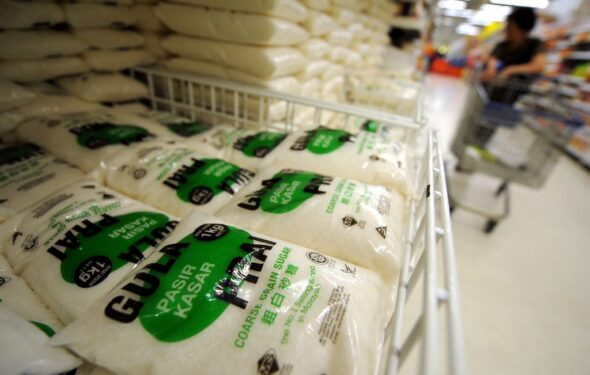By Yamin Vong
BEFORE the pandemic, AirAsia’s tagline was: Now Everyone Can Fly.
Two weeks into the Movement Control Order (MCO) and with another two weeks to go to April 28, today, anyone who wants to fly home between East and Peninsular Malaysia has to book Malaysia Airlines.
As of the time of writing this (April 13), the earliest available Malaysia Airlines flight from Kota Kinabalu to Kuala Lumpur is May 20.
This brings up the subject of the airline industry and how the grim outlook for tourism is presenting a great opportunity for a smart and brave operator.
“If Malaysia can end its MCO by June, then there will never be a better time to pick up favourably timed landing slots at the world’s busiest airports,” said a management team member at Golden Skies Ventures Sdn Bhd (GSV) who declined to be identified because he is not authorised to speak. GSV is currently making a bid for Malaysia Airlines Bhd or MAB.
Addressing the billion-dollar question about the fleet of six Airbus A380, the world’s largest commercial passenger aircraft, he said: “The A380s have always been a key component of our plan.
“There is no demand for the 380, so we cannot sell. But they need to be utilised otherwise they’re depreciating on the ground.
“However, flying the 380 profitably requires a high load factor because the variable cost is also high, even though expected lower fuel prices over the next 12 months is helpful.
“Flying the A380 makes a statement. My colleague was making this observation of a Mumbai airport schedule. A MAS 737 is at an air bridge between a Singapore Airlines A380 and Thai B777. What kind of brand positioning is this?
“We want to maintain Malaysia Airlines as a premium airline and we are convinced that the aviation market has a place for co-existence of full-service carriers and low-cost airlines. Not every passenger wants to fly low-cost and conversely not every passenger can afford to fly full-service.
“We will be refurbishing and flying the A380s from Summer 2021 for sure. We are confident there will be demand for selected long-haul routes. It’s a question of product offering and marketing.
“The 380s are brilliant; they can drive revenue up quickly if we are clever and courageous.”
In an earlier report by The Edge, GSV said it has offered a capital injection of RM11 bil and to assume the airline’s full outstanding Islamic bonds or sukuk, its CEO Shahril Lamin was quoted as saying.
The GSV members include corporate lawyer Shahril; former Malaysia Airlines commercial director Datuk Abdul Rashid Khan; former Performance Management and Delivery Unit’s anti-corruption director Ravindran Devagunam; and economist Dr Puvanesvaran Sanjivee.
FocusM had reported in January that Air France-KLM, Japan Airlines Co Ltd and domestic carriers AirAsia Group Bhd and Malindo Airways Sdn Bhd were previously said to have shown interest in MAB.
Another pre-pandemic proposal was for a three-way merger between MAB, AirAsia Group and AirAsia X Bhd. According to the report, Khazanah believed this could be realised through “meaningful merger synergies” which the fund projects would bring in RM1.45 bil per year.
This, however, returns us to the problem posed at the beginning of this article, ie, if there is only one airline monopolising the whole of Malaysia, in times of crisis as we are facing now. Would travel between East and Peninsular Malaysia be enhanced? Surely not, the GSV official contended.
A competitive environment between a premium airline and a low-cost airline is needed to serve the market better. As both airlines are already serving the region, there is actually a larger market for them to compete in.
Singapore Airlines is doing extremely well operating out of an island. Finally, our tourism industry will also receive a boost by facilitating air travel for both premium as well as cost-conscious travellers into Malaysia, he added. – April 14, 2020









